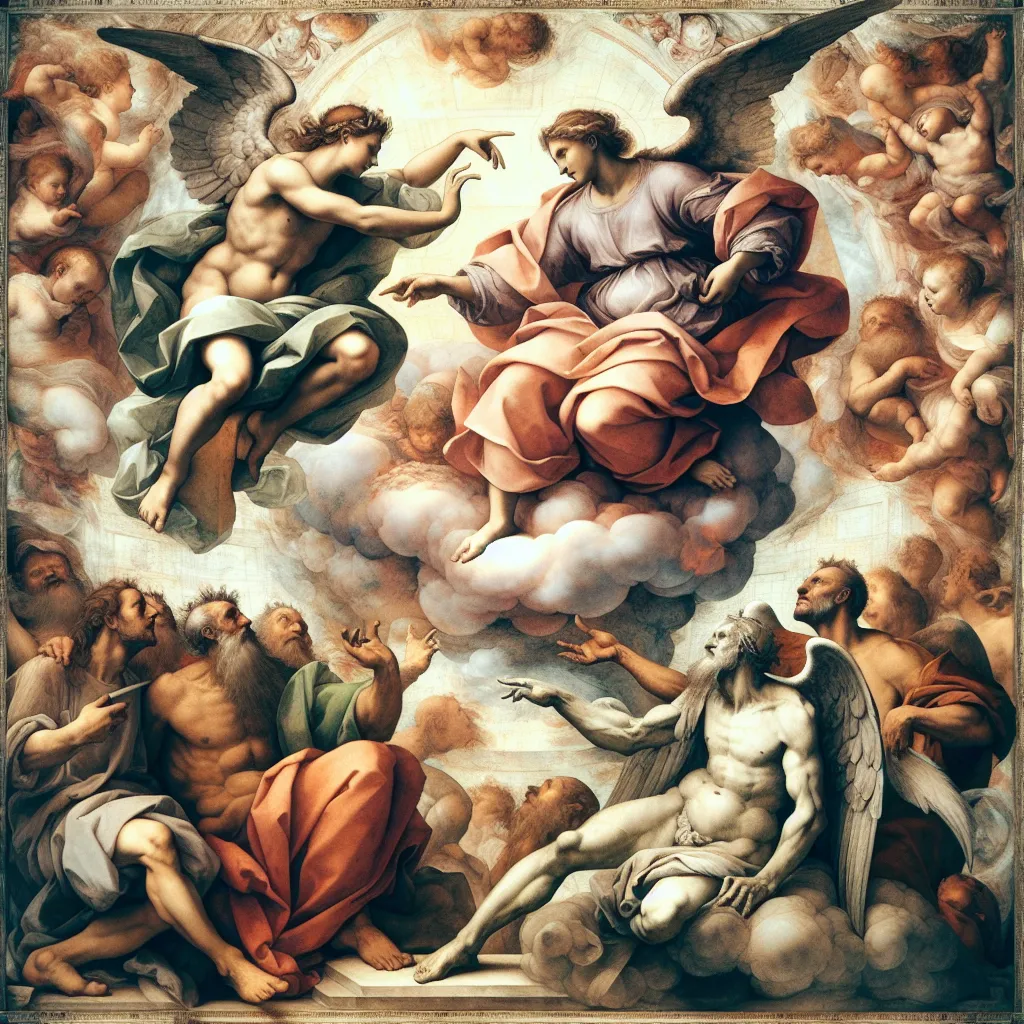
- Published on
- Authors

- Name
- You
Angels and Demons in the Bible: A Magical Perspective
The Bible, one of the most profound spiritual texts, is replete with instances of supernatural beings—particularly angels and demons. These entities are not just religious symbols but are also central to various esoteric traditions. In this article, we will delve into their roles, symbolism, and magical significance, blending advanced scientific thought with ancient mystical wisdom.
The Nature of Angels
Angels are often perceived as divine messengers or guardians. However, their portrayal in esoteric traditions reveals a far deeper, mystical significance.
Hierarchies and Functions
The Bible mentions different ranks and orders of angels, a notion elaborated in various mystical traditions:
| Rank | Description |
|---|---|
| Seraphim | Closest to divine presence; they are often seen as beings of pure light and fire. |
| Cherubim | Guardians of sacred spaces; often portrayed as protectors of the Tree of Life. |
| Archangels | Leaders among angels; they execute divine will across the heavens and earth. |
| Angels | Messengers and guardians to humanity; they guide and protect individuals. |
These hierarchies are not mere classifications but represent complex layers of cosmic consciousness. Modern science, particularly in fields like quantum physics, may offer an insight into how these layers could represent different dimensions or states of energy.
Symbolism and Magical Significance
Angels often serve as symbols of:
- Protection: Guarding individuals against negative forces.
- Guidance: Offering wisdom and insight, often through dreams or visions.
- Transformation: Catalysts for personal and spiritual growth.
In magical practices, invoking angels involves rituals designed to draw upon their protective and enlightening energies. Such rituals, often encoded with sacred symbols and incantations, aim to align the practitioner with higher consciousness.
The Nature of Demons
Conversely, demons in the Bible are typically seen as fallen angels or malevolent beings. Their representations in esoteric traditions are multifaceted and complex.
The Fall of Angels
One of the most famous accounts involves Lucifer, the "light-bringer," who fell from grace due to pride:
| Event | Biblical Reference | Esoteric Interpretation |
|---|---|---|
| The Fall of Lucifer | Isaiah 14:12, Ezekiel 28:12-17 | Represents the fall of consciousness from unity to duality From Classical to Quantum. |
| Legion of Demons | Mark 5:9 | Symbolizes fragmented aspects of the human psyche. Gods Mind Splitting to form the dimension we are currently experiencing |
Symbolism and Magical Practices
Demons often represent:
- Chaos: Disruptive forces that challenge order and harmony.
- Temptation: Spiritual trials that test an individual's morality and strength.
- Shadow Self: Aspects of the inner psyche that require acknowledgment and integration.
In esoteric and magical practices, dealing with demons involves complex rites of exorcism or shadow work. The goal is to confront and transmute these energies rather than simply expel them, thus transforming lower vibrations into higher forms of consciousness.
Science Meets Mysticism
In recent years, the synthesis of advanced scientific concepts with mystical traditions offers a new understanding:
- Energy Fields: Scientific studies on human energy fields (aura) align closely with the idea of angelic and demonic influences as different vibrational states.
- Consciousness Studies: Research into altered states of consciousness provides insight into how spiritual practices like meditation or ritual can invoke higher energies or confront lower ones.
Conclusion
The roles of angels and demons in the Bible extend far beyond simple moral dichotomies. Through the lens of esoteric traditions and modern science, these beings symbolize profound aspects of the cosmos and the human psyche. By understanding their deeper significance, we can engage with ancient wisdom to enrich our spiritual and everyday lives.
In embracing the knowledge of angels and demons, we traverse a path that merges scientific inquiry with mystical exploration, offering a holistic approach to understanding the universe and ourselves.
By reflecting on the mystical and scientific perspectives of angels and demons, we invoke a deeper, more nuanced appreciation for these enduring symbols within the tapestry of human spirituality.
